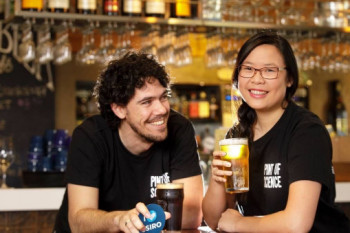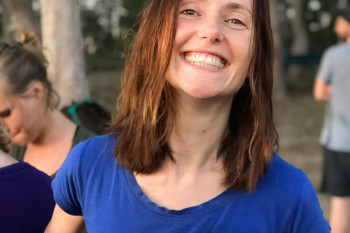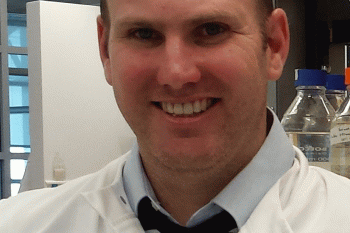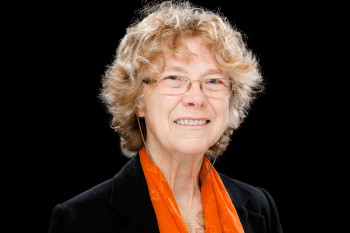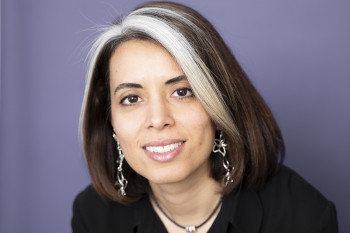© Pint of Science, 2025. All rights reserved.
Quantum Learning
Kyla Adams with Dr Tom Carruthers
Quantum Learning sounds like the latest venture by Netflix into the SciFi realm but it’s a whole lot more complicated than that.
We catch up with budding PhD student Kyla Adams on campus at the University of WA as she delves into the complex world of quantum liquids. Kyla describes how the use mathematics to help model and visualise “the weird stuff that’s going on”.
We also dive into Kyla’s journey from the girl guides and into the physics realm and her studies spread all around Australia!
~~
Kyla completed her Masters in Physics in 2020 at The University of Melbourne in Quantum Physics. She has recently enrolled in a PhD at the University of Western Australia. Her research is on Physics Education and how modern physics, particularly quantum physics, can be taught in early high school.
You can find out more about the Einstein-first project at the website, and follow Kyla on Twitter (@KylaAdams5).
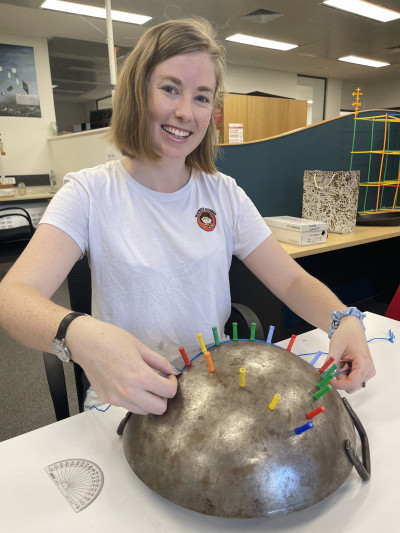
~~
Transcript
Kyla Adams: Changing the way that we teach the way people think, right from the start so that they can understand popular science news and how GPS works and stuff like that. And also if they do go on to do further science, what they learn isn't contradicted later.
Dr Tom Carruthers: G'day and welcome to Mug of Science. It's an initiative of Pint of Science Australia as part of our online experience in 2021. I'm Tom Carruthers and I'm fortunate enough to be interviewing Kyla Adams. We're sitting at the Hackett Cafe at the University of Western Australia in Perth. Kyla has just started her PhD work here at UWA and comes from, or has just finished doing her Master's at the University of Melbourne, where she was looking at quantum liquids. We're going to have a bit of a chat about the work that she has done, and maybe some of the work that she's going to do, which will be very very interesting, into some gravitational wave-y kind of space. Awesome, so this is going to be a fun interview, thanks for tuning in! First of all, welcome to Mug of Science!
Kyla: Thank you.
Tom: We start off all these Mug of Science episodes by first of all finding out what's in your mug today.
Kyla: I have a flat white, a nice standard coffee.
Tom: I'm hoping that we'll get enough of these Mug of Science episodes out to be able to see if we can figure out whether or not physicists are more inclined towards one type of coffee versus biologists, maybe! We'll see how it goes. My sample size is currently up to two and they're both flat whites, so at the moment, scientists drink flat whites! So before we get kicked off into the nitty-gritty of your research, let's just find out a little bit about Kyla the human first. What do you do outside of your academic career, what interests you?
Kyla: A few different things. I've been a part of Girl Guides for many, many years as a leader as well. So I help run guide events and stuff. I also do crochet as well.
Tom: That's lovely.
Kyla: Yeah, I’ve made a couple of things.
Tom: Do you ever try and crochet stuff that is influenced by your quantum-y goodness?
Kyla: I haven't had much influence from mine, but there's a lot of mathematicians out there who do crochet, so I've crocheted like a hyperbolic space, which kind of looks like coral so I've done that. I've followed a couple of patterns.
Tom: So there is obviously quite a bit of overlap between the kind of physics that you're talking about, as well as the mathematics that goes between that, and there's a really strong interconnect, what is it about Girl Guides that excited you? Was it just something you got into as a kid?
Kyla: It was something that my mum put me into as a kid. She was a Guide for a little while, and then I just really enjoyed it, made lots of friends and you can do heaps of different things like outdoor camping. There's activities, there's like you can do the craft stuff as well and just a little bit of everything, make really great friendships.
Tom: Is there much science that you can do?
Kyla: There can be. I usually weave it in a bit because I enjoy it, so I'm like, here's something I enjoy, yeah, see if you like it.
Tom: Awesome. All right, so let's talk a little bit first about what is it that you do and then we'll go into figuring out how you got there. Yeah, so quantum liquids: what, why?
Kyla: So quantum liquids are very strange. It's kind of a broad term, but essentially they're what happens when you get a whole bunch of single atoms, cool them all the way down to very, very close to zero.
Tom: And when we're taking zero, we're talking about zero Kelvin, yes? So that's around about minus 273 Celsius, right?
Kyla: About that, round about that, yeah. Which is the theoretical, we can't go colder, yeah. So that means everything stops moving. So temperature's kind of how much an atom is moving, so cool it way down it just sort of stops jiggling about as much.
Tom: So if we did get to zero, you'd be talking about quantum solids, right, because that's when things don't move... or is it, or am I trying to think too literally?
Kyla: Maybe a bit too literally. I'm not too sure about the quantum solids things, because you can have, if you can cool down like a solid metal, kind of like way down then it gets quantum properties and sometimes we call that a quantum solid. So I think it's a little bit of a very broad term.
Tom: Fair enough, so these quantum liquids, when you've got a bunch of atoms and you cool them down, effectively freezing them to minus 270 something degrees. What happens then with them?
Kyla: Yeah, so that's when the quantum effects start to happen. So all of these individual atoms start to behave as one single object in a way. So instead of all these individual atoms jiggling about like the coffee mugs and jiggling around, they just behave as one object and so they start to do weird things. So coffee is a good example. If you have your normal liquid here, stir it, it's going to get a little whirlpool in the middle. But if this was full of a quantum liquid, instead of stirring it more and it getting bigger, you get multiple whirlpools. You get these quantized vortices, right because the size, so the actual size of the whirlpool is kind of like defined, yeah, so instead of getting a lot, if you're stirring faster and faster, yeah, instead of getting a bigger whirlpool, you get another whirlpool. Yeah, so it's one of those weird quantum properties and so they're super strange. We need to know more about them and that's kind of what I was doing.
Tom: Right, cool. So I think I'm still completely blown away, I can't figure this out.
Kyla: Yeah it's very weird and look you know, that's why people are studying it.
Tom: Right, so how do you go from Girl Guides into looking at quantum liquids, and then into gravitational waves, which we'll dig into in a sec.
Kyla: Yeah, I'm not really sure if there's a straight line there. I think I just always enjoyed science, that stereotype, but loved it and I enjoyed it, which is also a benefit and I guess with Guides you learn how to do lots of different things. So I was interested in the broad range of physics. Yeah and so I ended up doing quantum stuff because it really interested me and through that there was some extra astro connections and I did a bunch of outreach stuff, which is now how I've ended up where I am now through that side of things. So it's a bit disconnected, but all science. All science, physics yeah.
Tom: So how much mathematics do you actually need for the quantum workforce?
Kyla: A decent amount. Yeah, I was theoretical. So it was a decent amount of maths that I had. Yeah, a lot of not quite Schrodinger equation, but similar, in that realm, looking at right stuff like that, yeah.
Tom: And that's because, and I could be completely wrong here, so please shoot me down if I am, but that's because pretty much everything in the quantum space we're able to define or be able to talk about largely from a mathematical perspective. It's very, very hard for us to do the experiment physically on a single atom. Yep, for instance yeah, and even if we are talking experimental stuff, where we're looking at larger systems, describing those systems is quite often very difficult in conventional means. Yeah is that kind of, is that a fair...?
Kyla: Yeah I think it's definitely fair. So a lot of them a lot of the stuff they can do experimentally, right, but the easiest way to describe it is to use the math. Sort of throw up this thing called a wave function which describes what the liquid is doing, right, this math formula that helps visualise the weird stuff that's going on.
Tom: I like that it's called a wave function, I'm starting to think of you know quantum liquids and liquid surface, but yeah, yeah so I guess my question then, is was this something that you were always... you said you were always interested in science, was that something that came through from your school? Were you passionate about it at school? Did you, yeah, have an awesome science teacher, that encouraged you to go on?
Kyla: Yeah, a bit of everything. Yeah, I think and because I always enjoyed it, my parents would encourage me, so I'd always get like those little science kits, oh they're so good, and then had some great science teachers in primary school who just sort of helped us do experiments in class as well, so it wasn't all rote learning. I remember one time we had to design like a just some sort of thing, to design a thing, just be an inventor and just make something, and so we're just free to kind of do whatever we wanted and make it. So yeah, it was really good to have that sort of freedom, and then I went into high school and I still enjoyed it and I could understand the maths as well, which helped to go into the physics, because it's largely math-based. Definitely, but yeah it gets harder at uni. A lot of the math, I struggled.
Tom: I think there's only very few people who get to university, and it's not hard enough.
Kyla: Yeah certainly in some way. Yeah it's kind of the point, I guess.
Tom: Yeah I guess, it is the point. So you then went to the University of Melbourne.
Kyla: So I did my undergrad in Queensland. I've jumped around a lot.
Tom: Right yeah, so did you grow up in Melbourne or Queensland?
Kyla: I grew up in Queensland, right, a place called Toowoomba, two hours west of Brisbane.
Tom: Yeah I've been to Toowoomba doing science shows there, so yeah, lovely place, actually you can get some really nice coffee there. Yeah, I was doing a series on the science of coffee at the time. So yeah, so you did your undergrad at QUT?
Kyla: At QUT, yep.
Tom: Right and then once you finished your undergrad, you went down Melbourne?
Kyla: For my Honours.
Tom: You did your Honours at Monash?
Kyla: Yep.
Tom: And then you're like, I just need to get another university. So you went to do your Masters at the Uni of Melbourne, yeah, and now like let's find another one and it's got to be further away.
Kyla: Further away from home, exactly.
Tom: And so you've come to UWA, yeah, you're now doing your PhD, yes, as part of the OzGrav institution type thing which is it's from, what I understand, OzGrav is multiple research bodies, correct?
Kyla: Yeah lots of nodes all over Australia.
Tom: Yeah, and then the main thing that OzGrav is looking at is gravitational waves?
Kyla: Yeah, that's what they're looking at. So what I'm doing now is part of the education and outreach arm of OzGrav right, so with a group called Einstein First, which wants to change the school curriculum in Australia to teach gravitational waves, general relativity, quantum physics from the very start, so from years three right up til Year Ten, and then beyond as well.
Tom: So what's the hope of your research as part of your PhD, then is it more looking at the education learning aspects or...?
Kyla: Yeah, more about the education learning aspect. So I'll be helping to design curriculum materials, so using my quantum knowledge from my Masters to help create a new, I'm looking at the Year Nine stuff and adding the quantum aspects into that, so a bit of particle physics, standard model, photons, all that kind of stuff.
Tom: Right. I'm trying to think back to my like high school and primary school science. I'm just, the Einstein stuff was kind of, it was left over there.
Kyla: Yep, because it's just a little bit too much to try and go for, yeah.
Tom: I imagine it's a bit of a challenge to find ways to just, I mean I think chemistry has the same issue, right, except for the fact that you can mix stuff, people see it in front of them, but to try and the concept of an atom is something that you can't see, yes. So yeah like classical physics, where you can smash a car into something.
Kyla: Yeah, it's difficult. So the team, the project's been around for many years. The team's been working on it, we use a lot of hands-on models and analogies, right. So one of my favourites is demonstrating what a photon is by using a nerf gun so you demonstrate a photon with a nerf gun. So you have your nerf gun bullet, your photon nerf gun itself is your photon generator. And so photons, for example, they can impart momentum when they hit something, so you can demonstrate that with a balloon in your nerf gun, right, shoot your photon at this balloon. It moves, it imparts momentum, and you can do an investigation with like different masses and things like that.
Tom: Okay and so the analogy there is to start to think about treating things like a photon of light as a particle?
Kyla: As a particle, yeah. That's a quantum sign because you have that wave particle dualities, this kind of thing so like can be a wave, and it can be a particle. It can have, we call it "bullet-yness" or waviness. “Bullet-yness”, yeah, and so we sort of developed that sort of language into the classroom, sure, because these concepts are fundamental to our modern technology.
Tom: Yes, okay cool, so I think that then makes one of my later questions a little relevant, which would be talking about where do you see your work impacting, something in the next 20 years, you're just hoping for your work to be all through the Australian curriculum?
Kyla: Yep, change the whole curriculum.
Tom: So everything is about gravitational waves?
Kyla: So changing the way that we teach, the way people think, right from the start so that they can understand popular science news, and how like GPS works and stuff like that, and also if they do go on to do further science what they learn isn't contradicted later, which is currently what happens.
Tom: Right, so how much how much of an issue is that?
Kyla: I know for me it was a bit of an issue, trying to get your head around... You learn light as a wave, like you draw these ray diagrams sometimes, and just light comes from the sun. When you're a kid, you draw the diagrams the sun with the rays coming out, that's how we think of it, which is not wrong, but there's a better way to think about it where it won't contradict. What's an example, can I think of an example where that one contradicts…but like curved spacetime, is another thing. So space is curved, that was Einstein's idea.
Tom: Right, that implies that space was thought of as being flat first, yes.
Kyla: Yep, so that was Newton. You drop an apple and it falls towards the bottom of towards the ground, towards the ground, because space is flat.
Tom: The space is flat, and that doesn't work for Australia because we're upside down or did we not know that the world was round at that point, am I showing no idea of a sense of history…
Kyla: We knew the world was round it's more so larger scale sort of stuff, so how does the earth orbit is a big thing. So we initially thought it was kind of like, I guess like a rope on a string around the sun, yeah but that isn't exactly how orbits worked and what we were observing didn't match that original thought.
Tom: Because if it was a rope on the string you'd expect the central point for it not to change its distance, right, like it's an ellipse.
Kyla: Yeah so lots of observations that didn't match, so we need GR, general relativity, to describe this curved spacetime.
Tom: And that curved space is these diagrams that we see where there's like the wireframe thing and then there's all these like little divots where the sun is or another star and then there's little divots for planets and even tinier divots for little moons.
Kyla: Yeah exactly, so we demonstrate that in the school curriculum. One of the activities is this thing called a spacetime simulator.
Tom: It sounds like it comes from Doctor Who.
Kyla: Exactly yeah, it's this big lycra sheet where you can put these masses in and show orbits and how they work, how things fall like into Earth, so how an apple would fall or how our GPS satellites work and we can demonstrate this to our Year Three and Year Four students and they love it so you get to drop all these metal balls into a thing and see it go around.
Tom: But I mean, that's good because it means that you are able to start to now talk about the intangible in a tangible way.
Kyla: Yes, exactly.
Tom: So is that kind of like the crux of the drive behind your work in these coming years, yeah to find that tangible analogy?
Kyla: Yeah exactly, and we find that they're lasting as well. So the first intervention or like the first time we did this stuff was 10 years ago, right. I say we, I wasn't involved then.
Tom: You can claim it, it's fine.
Kyla: 10 years ago and currently I'm working on a paper where they interviewed some of those students, right, and they still remembered a lot of the activities and concepts from 10 years ago when they were in Year Six. So it works, at least on that level so far.
Tom: So why don't we, why don't we do that? Yeah, do you run into any kind of issues with teachers picking up this stuff?
Kyla: That is what we're working on. So currently we work with a lot of teachers but they're the keen ones who want to do this.
Tom: Because I know that teachers are always overworked and under-resourced.
Kyla: So yeah, we run teacher workshops, so we walk them through the curriculum, ask for their feedback as well. It's like, do you think this is too much would your students understand it, would they engage with it, would you teach this, so making sure we get that feedback as we develop it, and then making the resources available to them, and all the activities are made from either cheap materials or stuff that we can provide to the schools as well for these initial test runs.
Tom: So with that goal that you were saying before about you know, you've taken over the Australian curriculum with these orbitals, it's all your content now, yep future goal?
Kyla: Future goal. There's obviously the hope is that this is a benefit to society, because it then means that we have a better understanding of more up to date at least.
Tom: Are there any other impacts or benefits that you're hoping to aim for? You mentioned being able to interpret, yeah, being able to interpret and understand, know the motivation behind maybe scientific funding as well, because these things cost a lot of money. And so how do we engage the people who are actually funding the research if they can't or if they haven't heard of already or engaged with what the content is?
Kyla: Yeah, so they know like what's going on and also it's important to let the public know what we've been working on, like these are really cool fundamental modern ideas that aren't taught in schools.
Tom: Do we know, I mean I know that in the past, there's these big questions that are answered by big discoveries and typically it takes, I mean, Einstein from predicting gravitational waves to their actual detection was 100 years. Do we know whether or not our progress of detecting gravitational waves or this kind of research, do we think we can foresee practical applications in the smartphones of the future or any of those types of players?
Kyla: Yeah I know like with the instrumentation stuff, so what we need to be able to detect these gravitational waves, there's lots and lots of engineering that goes into it and there has been spin-off technologies from that. So a little bit like the space program where, yeah they have to design something here and then they realise actually this would be really good to solve all these problems over there. So it's one spin-off of that research but who knows, there could be heaps of others. We need to see how we go.
Tom: Alright, well thank you so very much for joining us on Mug of Science which is again part of Pint of Science Australia in 2021, but you already know all about that! We do try and finish off these particular episodes with one final question which is asking you to finish this sentence: to me, a scientist is someone who....
Kyla: …is curious.
Tom: Curious.
Kyla: Yeah, curious. Yeah, it's looking at the cats.
Tom: A scientist is a cat. Yeah, I think curiosity is fundamentally important. Thank you so very much for joining us.
Kyla: Thank you for having me.
Tom: I had a wonderful time interviewing you, and we'll see you later in other Pint of Science-y things in there.
Kyla: Most likely, yes.
Tom: Thanks again, I've been Tom Carruthers. This is Mug of Science.
